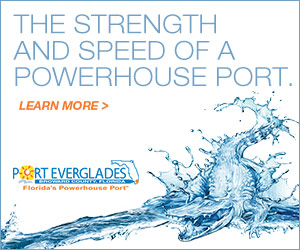|
By William DiBenedetto, CBN Feature Editor
The buzzwords for intermodal logistics are technology, innovation, collaboration and cost-control, but the trick is to make it all work in an economy handicapped by increasing costs, the continuing driver shortage and sluggish rail numbers so far this year.
Rail traffic started out relatively strong this year but then "fell off a cliff" in March and April, according to Hale Stewart, a lawyer and transportation analyst for Seeking Alpha. "While I continue to be mildly optimistic about the economy for the remainder of this year, there are some legitimate pessimistic arguments," he says, based mainly on his study of rail traffic data.
Stewart breaks out rail data by dividing it between intermodal units (which tend to be manufactured goods) and carloads, which tend to be commodities like coal, mineral ores, and oil. Briefly put, carloads have been "awful," he notes, while intermodal has been "negative, but not so awful." He also ties the rail data to trucking and shipping performance, concluding that they are "confirming the negative signal from rail" because manufacturing on a global scale has been negative and "the commodity collapse - at least in terms of commodities supplied - is continuing."
Class I railroads have been trying to offset the commodity collapse—especially the loss of coal volumes and revenue—by diversifying traffic mixes and focusing on other business segments, namely intermodal. BNSF Railway is a good example of this dynamic. Its intermodal volume increased 6 percent in the first quarter year-over-year, while the industry average was only 1 percent. Neither the 1 percent increase in intermodal nor upticks in automotive and construction-related traffic were enough to help Class Is make up for the continued, steeper-than-expected decline in energy-related volumes.
"There’s a slowly strengthening economy out there and we’re doing a lot of business development to go after it, which again is being overshadowed by just the huge [negative] volume numbers for coal and shale, and the other headwinds we have," said Eric Butler, Union Pacific’s executive vice president of marketing and sales, during UP’s April 21 earnings teleconference.
The numbers are troubling for the rail industry and transportation in general. Are they sustainable, and can they even increase in light of the Panama Canal expansion, which is scheduled to open next month? The answer is maybe, but if the intermodal story will continue to have legs during the course of the year, it will need some smart thinking.
The quest for efficiency-improved infrastructure and technological innovation continues. "Re-engineering the intermodal yard, the container yard, and the ocean terminals by increasing density on current properties is the next generation ‘throughput goal’ for intermodal yards," says Curtis Spencer, president, IMS Worldwide, Inc. New wide-load gantry cranes, also known as rail-mounted gantry (RMG) cranes, are emerging as an alternative to current mechanical choices for intermodal, terminal, and ocean terminal operations, he says.
BNSF recently introduced RailPASS, a truck driver app designed to expedite in- and out-gate processes for truck drivers who drop off, pick up or need to locate a trailer or container at a BNSF intermodal facility. The app is part of the railroad’s efforts to boost intermodal service performance to help generate more domestic volume. Drivers can access RailPASS on their smartphone or tablet to input shipment data, receive equipment status information and update an assigned parking location. BNSF say the app eliminates the manual inputting of information at terminal gates and reduces the need for a trucker to stop at a driver assistance building.
CSX Corporation plans to build a $272-million
|

intermodal rail terminal in North Carolina; the idea is to make the Carolina Connector (CCX) a major transportation hub for the region. The projected completion date is the end of 2019. CSX has pledged $150 million to cover costs, and is expecting to receive $100 million from North Carolina’s Strategic Transportation Investment (STI) program. The remaining money is expected to come from other development programs. Then there’s "autonomous logistics," which according to DHL’s "Logistics Trend Radar," is on the rise both on the ground in the form of self-driving vehicles, and in the air—as in unmanned aerial vehicles (UAVs) .
"The next step for self-driving vehicles in logistics will be to overcome regulatory and security challenges to deploy autonomous vehicles on public roads," says the DHL report. And UAVs "still require a bit more time before mainstream adoption."
A long list of emerging trends cited by DHL in its trend radar report include:
- Convenience logistics – meaning 24/7 availability and convenience. "With increasing consumer trust in purchasing groceries and pharmaceuticals online, there is high demand for new cold-chain packaging and delivery solutions that maintain the integrity and traceability of temperature-sensitive products."
- De-stressing the supply chain – "Supply chain complexity and varying customer needs require the right mix of transportation modes and services. De-stressing is achieved by adjusting logistics to operate sustainably at lower cost with higher quality. For example, a tactical transportation ‘slow-down’ can balance the supply chain, cut storage costs, and achieve regulatory compliance by reducing the carbon footprint."
- Fair and Responsible logistics – "The intersection between the need to remain competitive and the need to increase sustainability has given way to a new strategy called fair and responsible logistics. Logistics providers can meet these demands by providing new services that generate revenue while also improving the welfare of society and the environment."
- Logistics marketplaces – The growing need for transparent, flexible and easily adjustable logistics services "fosters the creation of disruptive digital brokerage platforms that match a variety of logistics demands with supply. Such centralized marketplaces can provide visibility on the information, rates, and services of different logistics providers, and enable solutions to be digitally tailored to meet the needs of each customer."
- Multi-purpose networks – Sector-specific or even customer-specific logistics chains will become a thing of the past through the rise of multi-purpose networks, "enabled by innovations in transportation, packaging, real-time supply chain monitoring, as well as collaboration between different sectors."
- Smart energy logistics – The increasing shift towards renewable energy sources such as solar, wind, etc., is propelling the adoption of electric mobility solutions in logistics.
Some of these trends are closer to reality than others but all are on the horizon, making it an exciting time for transportation logistics and cargo business. Maybe we’ll see them (and you) on the other side…
|




